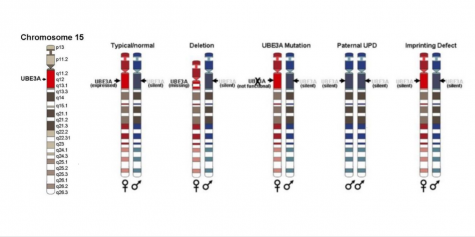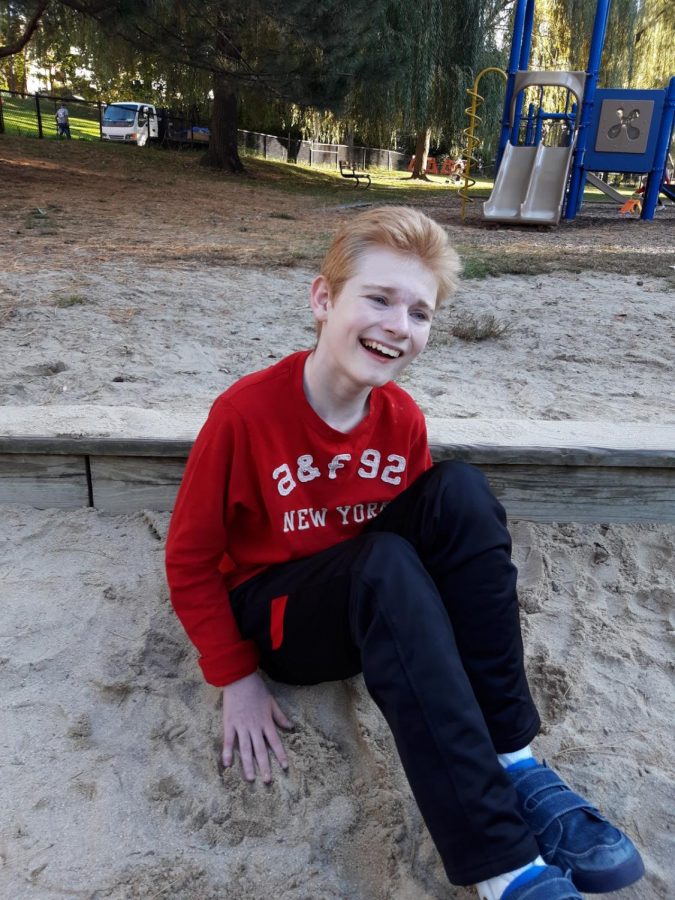A Day in the Life of an Angel
All over the world there are people who deal with genetic disorders. Though less common, Angelman Syndrome is a genetic disorder that occurs when the UBE3A gene in the maternal chromosome 15 is mutated or deleted.
Not many people have heard of Angelman Syndrome, and there is a good reason for it. According to FAST (Foundation for Angelman Syndrome Therapeutics), “Angelman syndrome (AS) is a rare neurogenetic disorder that affects approximately one in 15,000 people – about 500,000 individuals worldwide.” It occurs when the UBE3A gene in chromosome 15 on the mother’s side is not functioning. As explained by FAST, “in a typical person, the maternally inherited UBE3A gene is active, while the copy of the gene inherited from the father is silenced in the neurons in our brains.” Generally, AS is not inherited but is “caused by a deletion or UPD. Instead, these genetic changes occur as random events during the formation of reproductive cells or in early embryonic development,” according to FAST.

Because of this mutation, people with Angelman Syndrome (AS), who are often referred to as Angels, struggle with motor skills. Things like talking, walking, and getting regular sleep are a few of the things that Angels might not ever be able to do. Most will never speak, some never walk, and many Angels struggle with seizures. Though they grapple with many seemingly simple tasks, their life expectancy is no different than anyone else’s. Regardless, Angels will have to have a constant supervisor and can never live alone.
Additionally, Angels can attend school but have to have an aide, and Angels are generally put in a special class such as IEP classes.
Despite these challenges, many Angels are often giggling or laughing. As part of the disorder, people with AS are not aware of the danger around them as everyone else is and are usually very happy. Many Angels have the mental age of a toddler and, as a result, would gladly take a baby toy over a PlayStation. For example, my Angel step-brother, Jerry, loves laughing at even the most trivial things, things like dropping a toy or spilling milk. However, he does not understand the danger of being in the middle of a busy road, for example. Once, when Jerry was a toddler, he got out of the hotel room that he was staying in with his family and got lost, not realizing he was. Fortunately, the security guards found him and brought him back to the hotel room.
Since many people with AS have difficulty walking, most do physical and occupational therapy to help Angels better move and communicate. Some even struggle with epilepsy and may often take epilepsy medication to keep seizures to a minimum. Many also take sleep medicine to help them sleep better.
Though there isn’t a cure for AS yet, research is underway, and clinical trials have even started. In hopes of improving the quality of life for Angels, groups like FAST and Angelman Syndrome Foundation are raising money for research. Many researchers are trying to figure out how to activate the paternal gene, while some are just trying to make daily tasks, such as walking or sleeping, easier until a cure is found.
If you would like to donate to help further Angelman Syndrome research visit cureangelman.org/fundraising or go to www.angelman.org/make-an-impact/ways-to-donate/






